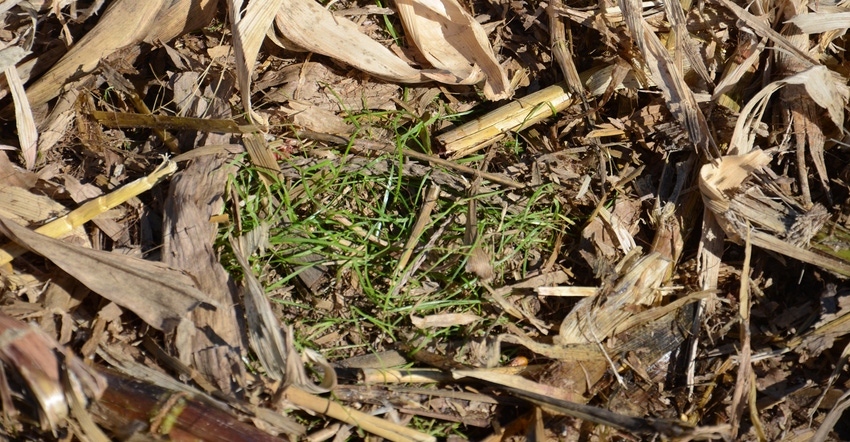
One farmer recalled recently that some three decades ago, he thought no-till was the sole answer to eliminating erosion on his rolling fields. Then a warm, wet winter came along. Surveying the field before planting, he found gullies 2 or more feet deep and a foot wide wherever water concentrated. He learned the hard way that it may take more than no-till to get soil erosion completely under control on the most vulnerable soils.
What wasn’t as obvious was sheet and rill erosion also occurring where residue wasn’t heavy. And he had no way to detect how many nutrients were lost because they were attached to soil particles that were on the move.
Mother Nature brought another warm, wet winter to many areas this year. Clint Harrison, a district conservationist with the Natural Resources Conservation Service and a member of the Indiana Conservation Partnership team, suggests it’s worth considering what this type of winter means in terms of your farmland.
Seek solutions
What has this extremely wet winter done to crop fields? You have probably surveyed the damage already.
With the heavy rains, erosion may be a concern — especially on fields that were fall-tilled, Harrison says. You may have noticed gullies or large washes in fields. There may be other issues you are missing. The unseasonably wet and warm weather may have caused nutrient leaching as well.
Harrison suggests two conservation practices that can reduce erosion and nutrient leaching while building organic matter.
• No-till farming. It may not be the be-all, end-all in terms of eliminating all soil erosion, but it is certainly a good starting point. No-till is typically very effective at reducing sheet and rill soil erosion.
• Planting cover crops. This is a great companion practice for no-till. Certain cover crops act as scavengers to capture excess nitrogen and other nutrients. Not only can cover crops help by improving water quality, but they also can save you money in the long run, Harrison says.
The benefits of no-till and cover crops seem endless, he notes. Different varieties of cover crops work better for certain operations, on certain soils and after specific cash crops. Contact your local NRCS district conservationist or seed dealer to find out more about the benefits of cover crops. These specialists can also provide insight into what varieties and mixes would work best for your operation.
About the Author(s)
You May Also Like




